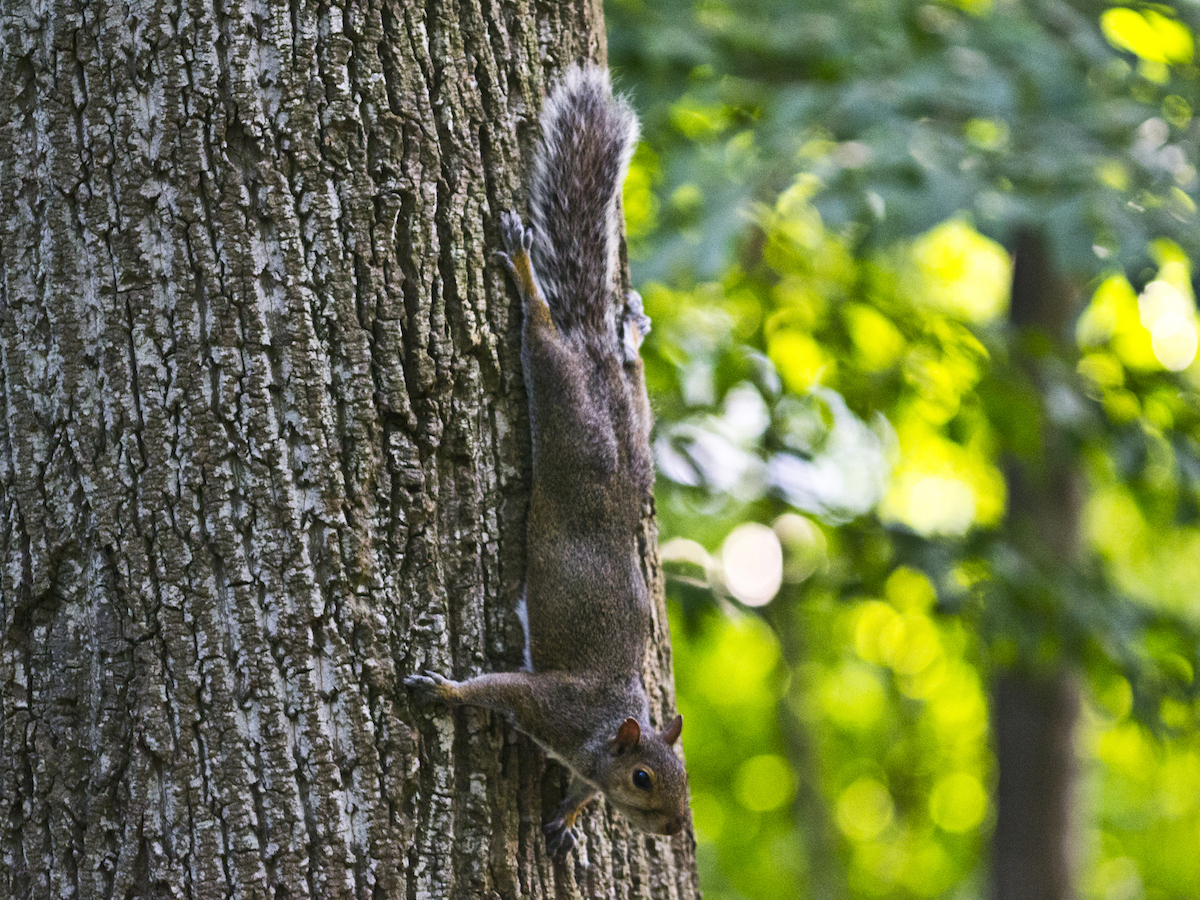Groundhogs Marmota monax

Groundhog Identification
Color: Generally grizzled, brownish gray
Size: The head and body averages 16” to 20” (40 cm to 51 cm). The tail is usually 4” to 7” (10 cm to 18 cm) long.
Legs: 4
Antennae: No
Shape: Compact, chunky bodies covered in fur with a short tail; forefeet have long, curved claws for digging burrows
Region: Northeastern and central United States
What are Groundhogs?
Groundhogs are also referred to as woodchucks or whistle pigs. They are a member of the squirrel family. There are six species of woodchucks and marmots that occur in the United States. These animals commonly invade cropland and vegetable gardens, eating or destroying vegetables and landscape plants. Although groundhogs are slow runners, they scurry quickly to their dens when they sense danger. Keep reading for more groundhog/woodchuck facts, and to learn how to get rid of groundhogs. If you’re dealing with groundhog damage, find a local groundhog control professional to help safely and effectively remove them.
What Does a Groundhog Look Like?
Adult groundhogs range anywhere from 16 to 22 inches in length and weigh anywhere between five and 13 pounds. Their bodies are compact and chunky, and covered in brownish gray fur with a short tail. Groundhogs have four legs and their front feet also have long, curved claws for digging burrows.
There is no difference between a groundhog and a woodchuck. In fact, the terms woodchuck and groundhog are interchangeable.
Groundhogs build their burrows in open areas such as fields, pastures, and along fences and roadsides. They’re also known to dig near building foundations or at the bases of trees, often leaving mounds of soil at the dig site.
The most familiar species, Marmota monax – commonly called the groundhog or woodchuck - mainly lives in the eastern part of North America but also extends into the Northwest. The other five related species, often referred to collectively as marmots, are found in the western regions of the continent.
Groundhogs are generally found in open and closed forests and bushy areas. In agricultural areas, they live along creeks, pastures and wooded areas where they can create extensive burrow systems.
In the wild, groundhogs typically live three to four years, though some may reach up to six years. With proper care in captivity, they can live significantly longer, up to 14 years.
Unlike nocturnal animals that are active at night, groundhogs are diurnal. They spend their days feeding, often in the early morning hours, and rest in their burrows at night.
They are strict herbivores and eat a variety of vegetables including soybeans, beans, peas, carrot tops, alfalfa and grasses. When not feeding, they are known to sunbathe during the warmest periods of the day.
While groundhogs can climb trees, typically to escape predators, this behavior is uncommon. They prefer to stay on the ground and rely on their extensive burrow systems for shelter and safety.
Yes, groundhogs are among the few mammals that enter into true hibernation, which generally starts in late fall near the end of October and continues until late February.
Every year on February 2, people around the country celebrate Groundhog Day, a tradition that centers around the idea of a groundhog emerging from its hibernation to "predict" the weather. If the groundhog sees its shadow and returns to its burrow, there will be six more weeks of winter. But, if the animal does not see its shadow, then spring is right around the corner. The Groundhog Day ceremony featuring Punxsutawney Phil in Pennsylvania is the most popular.
Groundhogs are considered nuisance wildlife because they can cause extensive damage to home gardens, farms, orchards and field crops as a result of their feeding and burrowing habits. When burrowing, they have been known to destroy building foundations, create unwanted holes on lawns and cause electrical outages from gnawing on underground wires.
Groundhogs rarely come in contact with humans and therefore pose no major public health hazards. However, they can carry fleas, ticks and rabies.
Yes. The primary predators of groundhogs are hawks, foxes, coyotes, bobcats, dogs and humans. However, motorized vehicles kill many groundhogs each year.
Groundhogs sometimes den in crawlspaces, which can cause damage to your home’s foundation. To prevent groundhogs:
-
Inspect your home’s exterior for potential access points such as:
-
-
Broken or missing vent covers
-
-
-
Holes in the foundation
-
-
-
Loose siding or gaps around pipes
-
-
Seal openings using durable materials:
-
-
Fill cracks and crevices with caulk
-
-
-
Repair or replace damaged siding
-
-
-
Cover chimneys, vents, and other exposed openings with sturdy mesh
-
If an infestation is suspected, contact a licensed pest control professional to recommend the best method to get rid of a groundhog.




